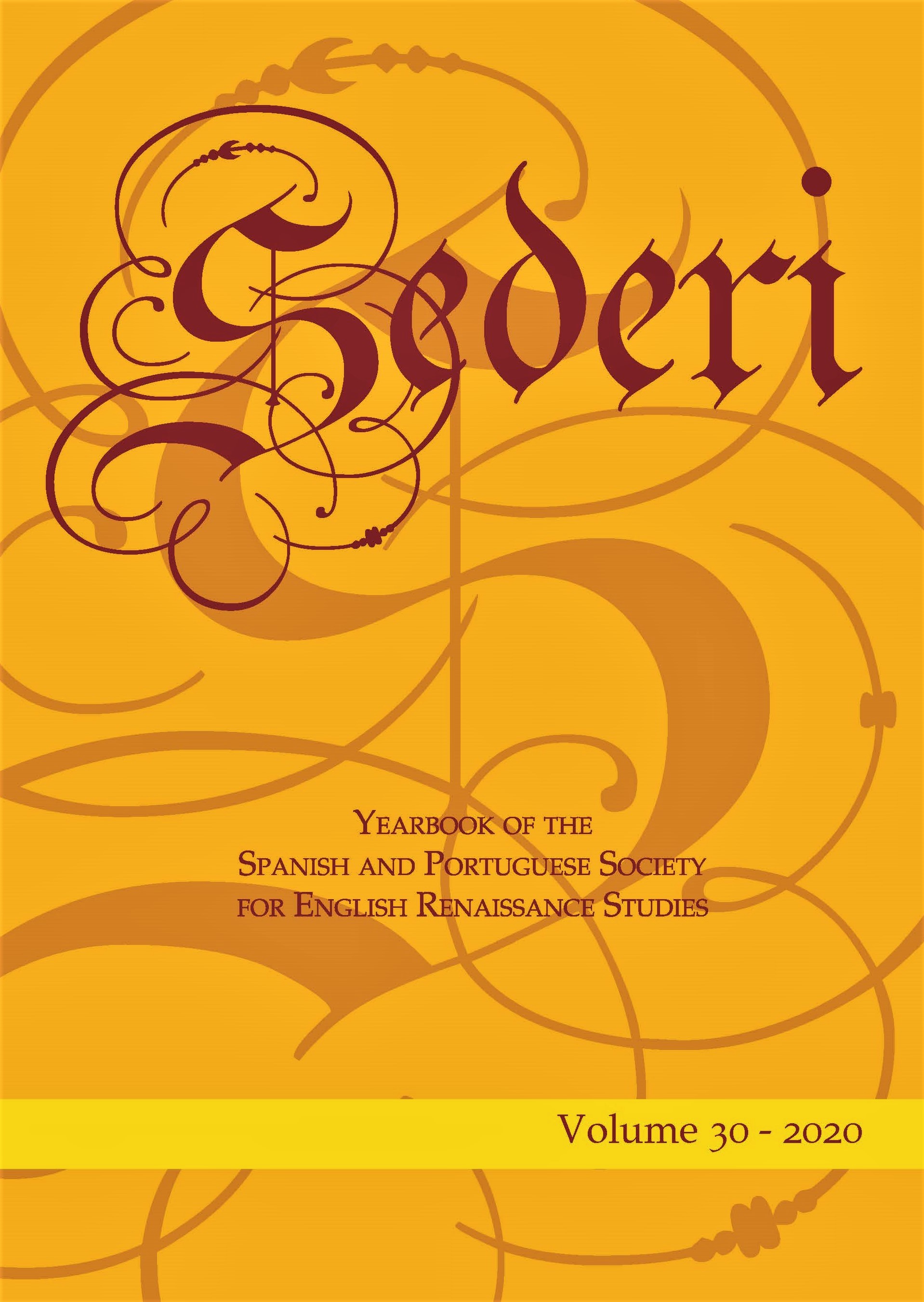Writing and weaving:The textual and the textile in Spenser’s 1590 Faerie Queene, III.i
Keywords:
Spenser, ekphrasis, Arras tapestries, textuality, BritomartAbstract
Most often, Ovidian allusions are woven into Edmund Spenser’s The Faerie Queene (Books I–III, 1590) without developing into an open re-telling of myths. One significant exception occurs in Book III, Canto 1: there the action comes to a temporary stop in order to make space for a detailed description of the tapestry in the hall of Castle Joyous, which depicts the story of Venus and Adonis. This article intends to offer a reading of that episode that focuses on the importance of materiality and self-reflexivity as keys to its significance at the opening of Book III, and in the larger structure of The Faerie Queene.Here, the descriptive powers of the poet are both foregrounded and questioned, in a double movement of ekphrasiswhich gestures towards a serious interrogation of the value of representation, both in poetry and the visual arts. Implicitly, it is the poet (and through him, the reader him/herself) that must question his/her role and participation in the gradual and often painful awareness of the body that is foregrounded throughout Book III.
Downloads
Published
Issue
Section
License
The copyright holder of the published contributions is SEDERI.The hardcopy and an open-access version of the journal will be published simultaneously. The issues will be available online in the SEDERI website (http://www.sederi.org/yearbook/) and other repositories that have signed an agreement with SEDERI.
The authors who publish with this journal agree to the following terms:
a) SEDERI retains copyright of the essay.
b) If the author wishes to republish or rewrite the essay for another journal, or include the essay published in SEDERI in their personal repositories, or in any other way, they should contact the editors to obtain permission to do so. This will entail citing SEDERI as the original source and sending the editors a copy of the new version, or the link to the website, in case of online publishing.
The author(s) hereby warrant(s) that:
a) The essay submitted for publication is an original creation and does not infringe any copyright or property right of another journal, author or publisher.
b) The essay submitted for publication has not been previously published, whole or in part, and is not being considered for publication elsewhere.
c) Written permission has been obtained for any material from other sources included in the essay submitted for publication.




